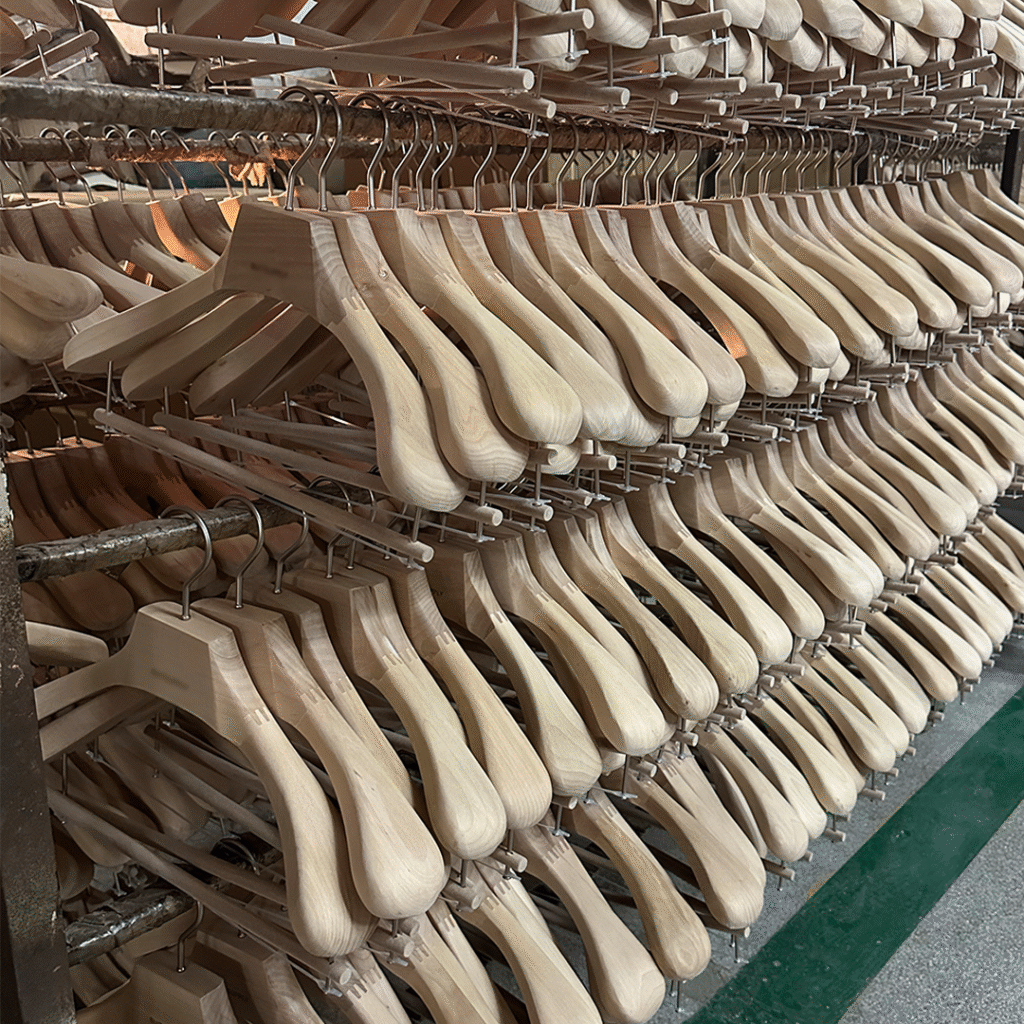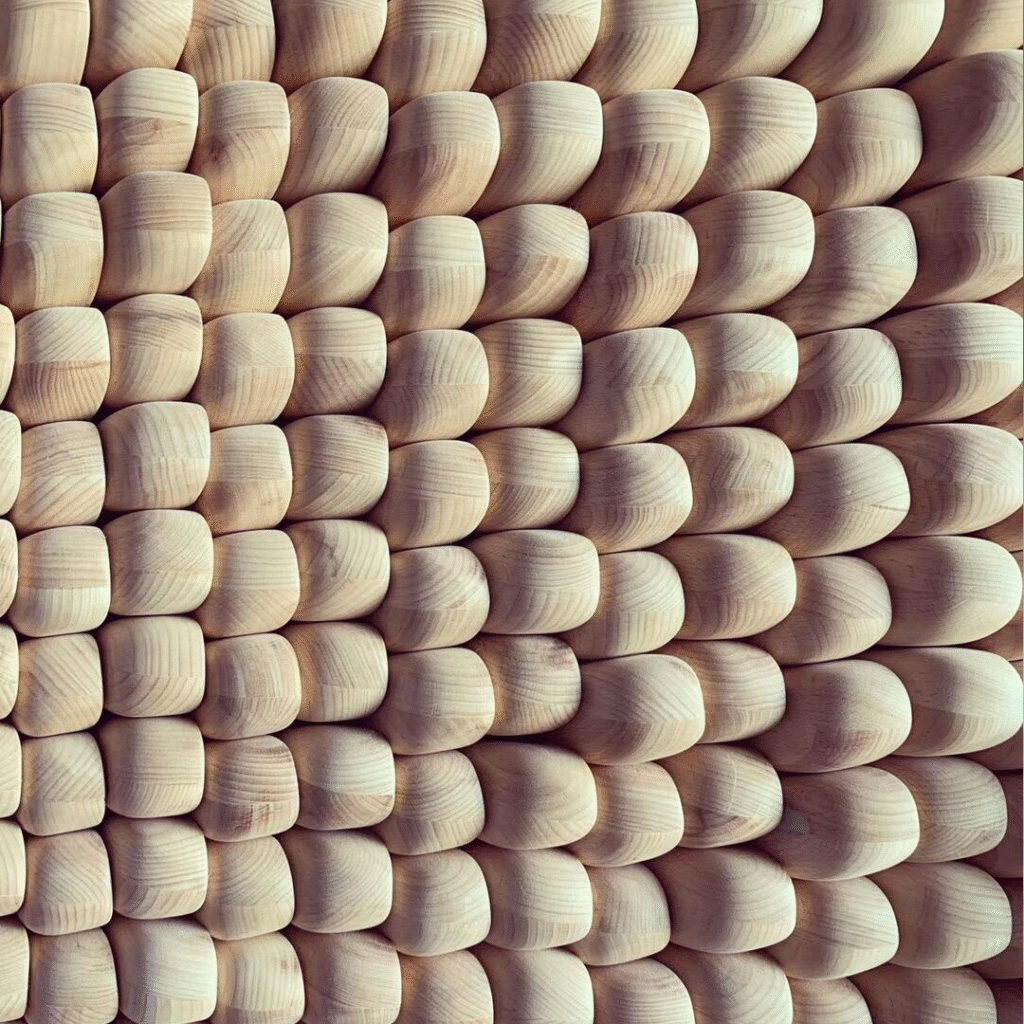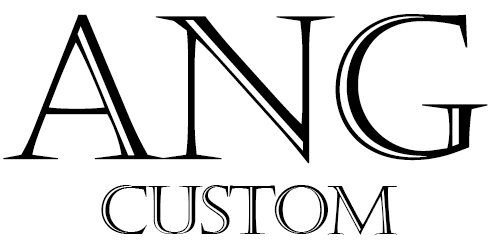wooden clothing hangers Complete Guide
I’ve watched too many fashion brands pick wooden clothing hangers wrong—they grab a “nice-looking” option, only to find the Coat hanger bends under a winter jacket, or the Dress hanger lets silk slip to the floor. wooden clothing hangers aren’t just “pretty”—they need to fit your clothes and your brand.
This guide breaks down everything you need to know: from picking the right wood (yes, lotus, beech, oak, and pine all matter) to nailing shoulder size and thickness—no fluff, just what works.

1. First Rule: Pick the Right Wood (4 Key Types for Clothing brand)
Not all wood suits every hanger. Here’s how to match 4 popular wood types to your needs—each with pros, cons, and ideal uses:
FSC-Certified Lotus Wood: The “moisture-resistant pick.” Lightweight but tough, it naturally repels dampness—perfect for a Dress hanger or shirt hanger. A women’s fashion brand I work with uses lotus wood Dress hangers for their silk dresses, and they’ve cut down on hanger warping by 60%. It’s mid-range in cost—more affordable than oak, sturdier than pine.
FSC-Certified Beech: The “workhorse for heavy items.” Dense and strong, it holds 10-12 lbs—ideal for a Coat hanger or Suit hanger. A menswear client switched to beech Suit hangers, and complaints about bent blazer shoulders stopped entirely. It has a smooth grain, so it pairs well with both casual and semi-formal brands. Just note: it’s heavier than lotus or pine, so shipping costs are slightly higher.
FSC-Certified Oak: The “luxury statement.” Denser than beech (holds 12-14 lbs) with a rich, visible grain—it’s made for high-end Suit hanger or Coat hanger. A luxury menswear brand uses oak Suit hangers, and customers regularly mention the “premium feel” in reviews. It’s the priciest option, but it elevates brand perception—worth it if your clothes are $200+.
FSC-Certified Pine: The “budget-friendly workhorse.” Lightweight (holds 6-8 lbs) and affordable, it’s great for a shirt hanger or Pants hanger. A fast-fashion brand I partner with uses pine shirt hangers for their basics, and they save 30% on hanger costs compared to beech. Just avoid it for heavy coats—pine warps under 10+ lbs.
2. Nail Hanger Size & Shoulder Thickness (Critical for Suits/Coats)
A “one-size” wooden clothing hangers ruins clothes—especially suits. Here’s how to get dimensions (and thickness!) right for every garment:
Suit hanger: Width and thickness matter. Aim for 17-18 inch width + 1.6-3 inch shoulder thickness. Why thickness? Thin shoulders (under 0.6 inches) collapse under a suit’s shoulder pads, creating creases that are hard to iron out. I once fixed a brand’s blazer return issue by switching their thin hangers to 2-inch thick beech Suit hangers—returns dropped by 45%. Add anti-slip felt on shoulders (stops jackets from sliding) and a pant bar (turns it into a 2-in-1 Suit hanger + Pants hanger).
Coat hanger: Go 18-19 inch width + 1-2.4 inch thickness. Winter coats are heavy (8-12 lbs), so the extra width supports the coat’s weight without stretching the shoulders. Use a reinforced metal hook—plastic hooks break under heavy coats. A outerwear brand uses 18.5-inch oak Coat hangers, and they’ve had zero hanger failures in 2 years.
Shirt hanger: 15-16 inch width + 0.4-0.8 inch thickness. Shirts don’t need thick shoulders—too much thickness stretches collars. Add a small notch on shoulders to hold shirt loops (stops shirts from slipping off). A casualwear brand swears by 15.5-inch pine shirt hangers—they keep displays neat and avoid collar damage.
Dress hanger: 15-16 inch width + 0.5-0.7 inch thickness. Slim enough for delicate fabrics (silk/satin) but thick enough to prevent bending. Add anti-slip grooves—silk dresses slide off smooth wooden shoulders. A women’s brand uses 15-inch lotus wood Dress hangers, and their customers love how the dresses stay in place.
Pants hanger: 14-15 inch length + flat rubberized bar. Skip round bars—they crease pants. A denim brand switched to pine Pants hangers with rubber strips, and jeans returns (from creases) dropped to almost zero.

3. Custom Logo: 3 Go-To Techniques for Wooden Hangers
Adding a logo to wooden clothing hangers isn’t one-size-fits-all—pick the technique that matches your wood type, brand vibe, and hanger use case:
Laser Engraving: The “durable minimalist choice.” It etches a fine, permanent design directly into the wood—no extra layers to peel or fade. Perfect for pine shirt hangers or lotus wood Dress hangers (softer woods take engraving cleanly). A sustainable casual brand we work with uses laser-engraved pine shirt hangers, and they’ve had zero issues with logo wear—even after 6 months of in-store use. It’s great for brands that want a subtle, eco-aligned look (no ink or metal added).
Screen Printing: The “colorful, brand-aligned option.” It uses ink to print bold, vibrant logos—ideal for matching your brand’s exact VI colors. Best for smooth woods like beech (Coat hanger) or oak (Suit hanger)—rough pine can make ink look uneven. A women’s dress brand uses screen-printed lotus wood Dress hangers, and customers often say the logo “feels like part of the hanger” (not an afterthought). Just note: opt for water-based ink if you market as sustainable—it’s eco-friendlier than solvent-based options.
Nameplate Logos: The “luxury texture boost.” We attach thin metal (brass, stainless steel) nameplates to the hanger’s shoulder—perfect for high-end oak Suit hangers or beech Coat hangers. A luxury menswear brand uses brass nameplate oak Suit hangers, and customers regularly call it “a premium detail” that makes the suit feel more valuable.
Final Tip: Test Before You Buy
Order samples (try a Suit hanger, Coat hanger, and shirt hanger) and hang your actual clothes on them. Does the Suit hanger keep the blazer’s shape? Does the Coat hanger hold a winter coat without bending? If yes, that’s your hanger.
Need Expert Guidance?
ANG specializes in custom wooden hanger for global fashion brands. Contact us for a free consultation material and sample.
